Shooting is in our DNA, so Mike Morton tests the Helix, a brand new scope from a brand new company called Element Optics.
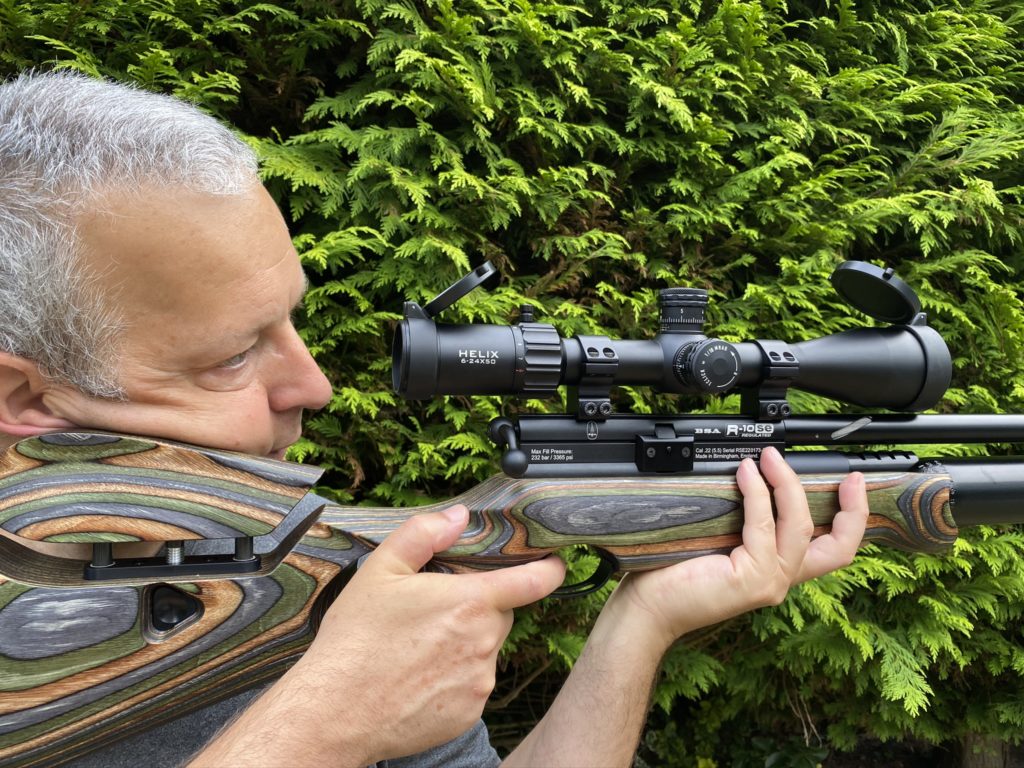
It’s always a pleasure to find specialised products that are built or designed by the same type of people that actually use them, and that’s exactly what we have here with the Helix 6-24×50 from Element Optics.
Element is a new US/Swedish company, and its diverse geographic identity makes sense when you see who’s involved. Matt Dubber from South Africa and Ted Bier from the United States are both airgun enthusiasts, competition shooters and YouTubers, while Johan Axelsson of Sweden is best known for his work with FX Airguns, which is run by his father Fredrik.
There are three models in the company’s current catalogue – the Helix, the Titan and the Nexus. The Helix, the subject of this review, is a second focal plane scope. The magnification range is 6-24, and the Helix will parallax down to 10 yards, making it suitable for close-range shooting as well as longer-distance work.
The airgun-focused line-up of the Element Optics team translates well to the Helix itself, as this is a scope that can be used equally well when mounted on an air rifle, rimfire or centrefire, and I was pleased to see the well-written manual make regular mention of airguns, especially during the explanation of the zeroing phase.
Helix 6-24×50 specification
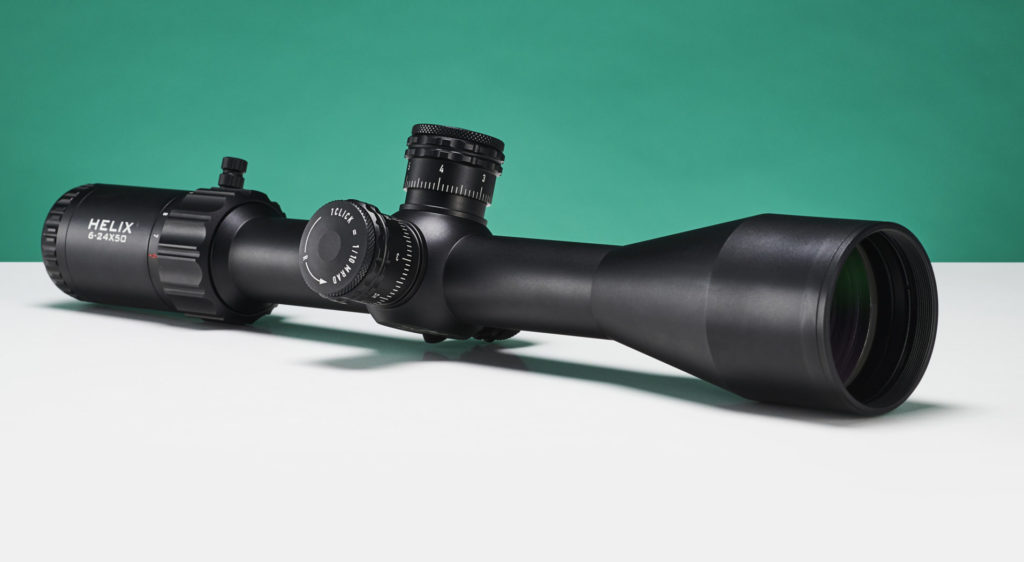
Manufacturer: Element Optics (www.element-optics.com)
Scope supplied by: Sportsman Gun Centre
Model: Helix 6-24×50
Price: £334
Magnification range: 6-24x
Tube diameter: 30mm
Reticle position: Second focal plane
Objective lens diameter: 50mm
Exit pupil: 9-2mm
Eye relief: 3.94” to 3.54” (100mm to 89.9mm)
Field of view: 19.1 to 4.2 feet at 100 yards (6.4 to 1.28 m at 100 m)
Click value: 1/4 MOA or 1/10 MRAD
Elevation adjustment range: 65 MOA or 18.9 MRAD
Windage adjustment range: 65 MOA or 18.9 MRAD
Minimum parallax: 10 yards (10 metres)
Overview
At £334, the Helix is far from being an entry-level scope, but depending on the type of shooting you want to do it could be all you need. At 13.1” (333mm), this sight isn’t overly long, while offering the shooter a good range of magnification.
It comes in a choice of two reticles with matching turret adjustments, is equipped with a side parallax control, has resettable turrets, a zero stop feature, a throw lever for the magnification ring, a sunshade, and both bikini-style and flip-up lens covers. It’s an impressive package and the only thing really missing is an illuminated reticle.
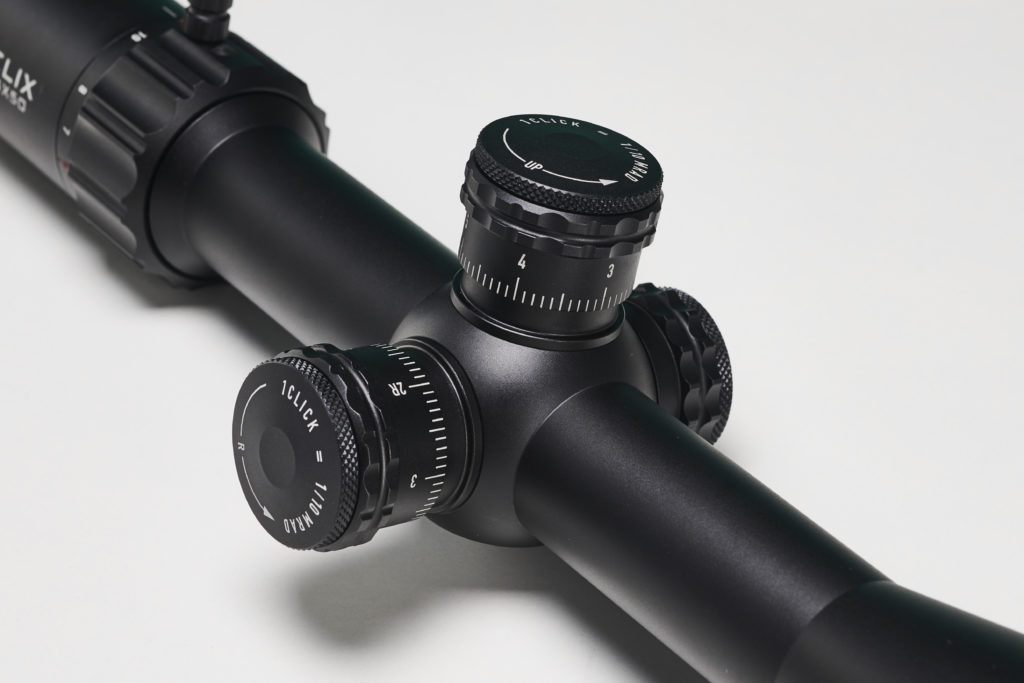
The scope has clearly been well thought out, and it’s the little details that impress. Both the parallax adjustment knob and the windage and elevation turrets feature two knurled rings rather than the usual one, so the user can get better finger purchase on these controls.
Another example is the magnification ring and the optional throw lever. It’s far easier and faster to alter magnification with this part fitted, and with practice you can even work out what magnification the scope is set to just going by the orientation of the lever while you’re in the aim.
I found the mag ring to be a little stiff, although to be fair this is a brand new scope, and so I fitted the lever as a matter of course. But if you don’t want to fit it, a little blanking plug is used to cover the screw threads – just remove it with the supplied hex key if you do decide to install the lever after all.
Turrets and Reticle
Element Optics has used stainless steel internals on the turret system to better resist wear and tear when using the scope to dial in. This technique is still something that’s more the preserve of long-range powder-burner shooters, but while most airgun shooters prefer to use holdover and holdunder for their shots, dialling in is a perfectly viable method for air rifles as well.
The Helix comes in both MOA (minute of angle) and MRAD (milliradian) models. Both offer very precise, albeit different, angular units of measurement. Each click of the turret on the MRAD version represents 1/10 mil, while one click on the MOA model is ¼ MOA. One click will therefore shift point of impact by 1cm at 100 metres and ¼” at 100 yards respectively.
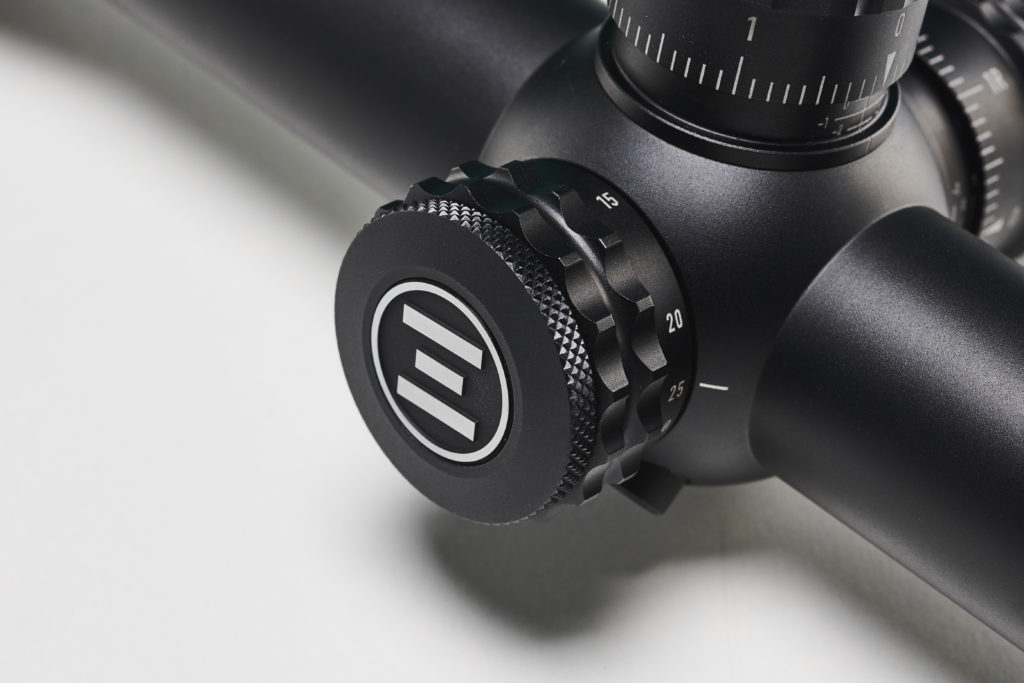
But the real benefit for the airgun shooter is the fact that the turret adjustments on the Helix are matched to the type of reticle. So if you see your shot is one mil high, for example, you know you need to adjust by 10 clicks. You can still find some scopes that have a milliradian reticle, while offering a mismatched click value in minutes of angle.
The Helix also has tool-free resettable turrets, which allow the shooter to zero the rifle and pellet combo, then reposition the turrets so windage and elevation are both set to ‘0’ at the chosen zero.
This is very useful if you should turn one of the turrets by accident or dial in for a shot at a different distance and then want to go back to the regular zero settings but have forgotten how many clicks you need to adjust by.
To reset the turrets you just need to remove the turret housing then refit it so the ‘0’ markler is aligned with your set zero. Both turret housings are held in place by a cap that simply uncrews by hand. The one on the windage turret unscrewed easily, while the elevation turret cap was screwed in very tightly and it did cost me a couple of rather sore fingers to successfully remove it.
It was worth it though, because removing the elevation turret reveals another feature of the Helix – the zero stop mechanism. This is a device that once it’s been set will let you turn the elevation turret back to your chosen zero after you’ve been dialling in for longer shots.
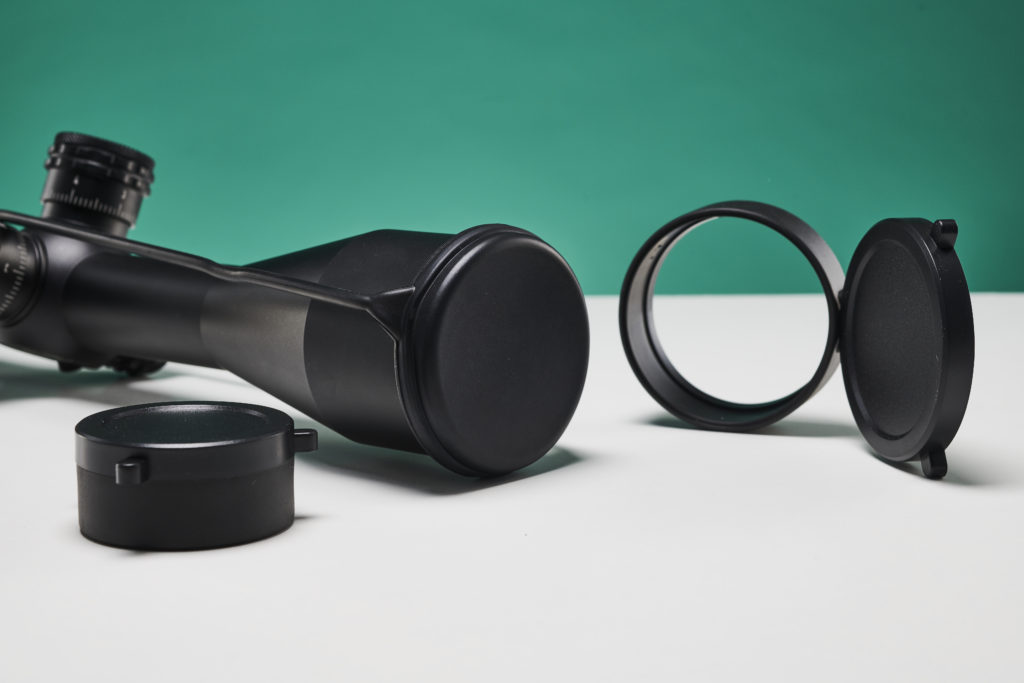
But this time, instead of having to look for the ‘0’ on the turret to know you’ve reached your zero, it physically comes to a stop and won’t let you dial down any further. This means you can make a return to zero without even needing to look at the turret.
The reticle on the test scope was the APR-1C MRAD, with APR standing for “all-purpose reticle”. Considering the large range of magnification, this is quite a simplified reticle, but it’s all the better because of it. The star feature for me was the use of a central dot rather than the usual cross, which allows for some very precise aiming, and at 24x mag the dot just covers a pellet hole at 30 yards.
The Helix is a second focal plane scope, which means the reticle remains the same size regardless of what level of magnification has been selected. But this also means the subtensions on the reticle will change with magnification. This scope has been designed so each mil marking, or MOA if you chose a Helix with the minute of angle reticle, will span its true value at 24x magnification.
Optical Clarity and Performance
The glass on the Helix certainly offers good value for money, being pretty clear in a variety of lighting conditions and offering decent edge-to-edge clarity. On one outing with this scope I watched an adventurous fox cub emerge from a hedgerow 50 yards away from me at around 8pm as the light was fading fast. Its fur was clearly defined, even with the magnification set at 12x.
Something I like to measure with any new scope, whether it’s designed to be used for dialling in or not, is how well it tracks when windage and elevation adjustments are made, and how well it returns to zero. A reliable test – provided you are using a reliably accurate rifle – is to ‘shoot the box’.
This means taking one shot at a paper target at the set zero distance, then shooting again, having adjusted elevation up by 20 clicks while maintaining the same point of aim. The next step is to move the point of impact right by 20 clicks, down by 20 clicks and finally left by 20 clicks, returning the fall of shot to the start point, all the while maintaining the initial point of aim.

The windage and elevation controls were a delight to use, with the clicks being positive and, more importantly, feeling exactly the same as each other in operation. The Helix’s tracking abilities and return to zero were pretty much spot on, with the last shot landing only a pellet’s width away from the first.
It’s clear that a lot of time and effort has been put into the design of this scope by the team at Element Optics, and it’s fellow shooters like us who can reap the rewards.










Leave a Reply